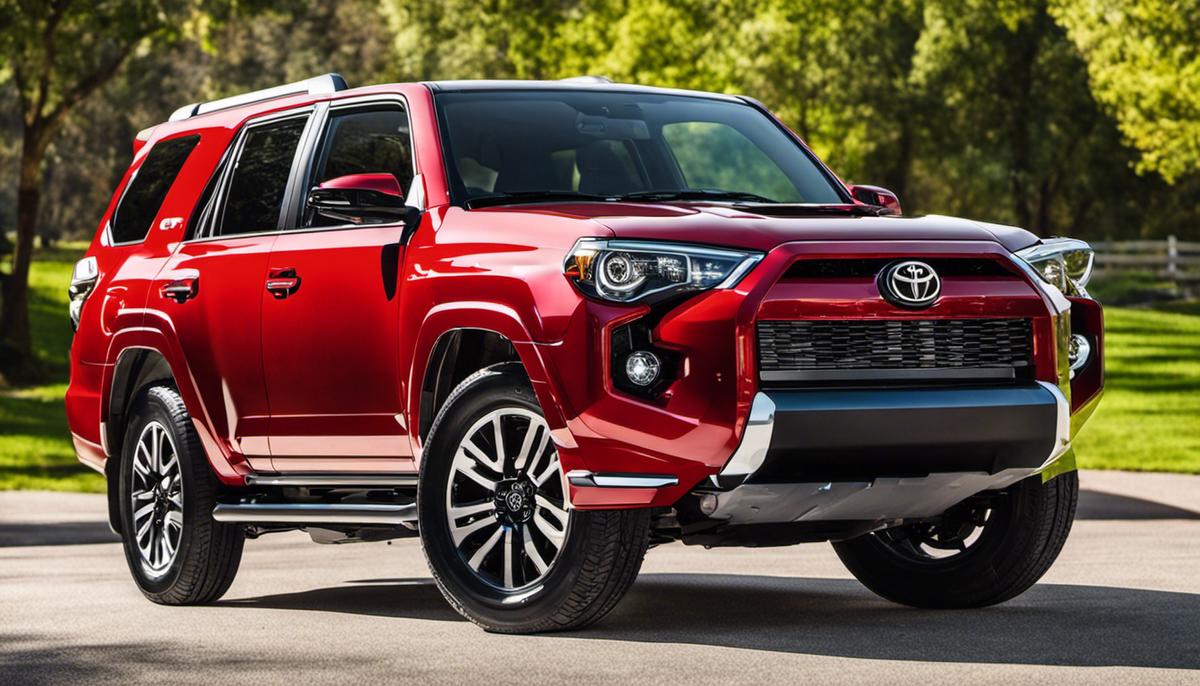Unveiling Common Issues with the 2020 4Runner

Last Updated on October 17, 2023 by Christ
As sporting an adventurous spirit and projecting a rugged appeal, the Toyota 4Runner 2020 stands among some of the most beloved vehicles in its class. However, like any machine that integrates a multitude of technologies, it isn’t without its share of issues. This analysis extends beyond the shiny exterior and explores a detailed assessment of concerns expressed by the 2020 4Runner owners. The investigation will delve into topics ranging from software glitches and connectivity concerns to mechanical complications and interior qualms while also not forgetting to highlight the recalls and service bulletins. Not only will it provide a comprehensive picture of the 4Runner’s performance but it would also potentially guide prospective owners to make an informed decision.
Contents
Software and Connectivity Issues
Decoding Software and Connectivity Issues in the 2020 4Runner
A quintessential SUV for generations, Toyota’s 4Runner is well-known for its powerful performance and durability. While the 2020 model continues this tradition with impressive features, some users have reported software and connectivity issues. This article highlights these commonly raised concerns in an effort to keep tech enthusiasts and 4Runner owners in-the-know.
First issue on the docket: Infotainment system glitches. Users report unanticipated reboots of the system, in particular the Apple CarPlay and Android Auto interfaces. This tends to occur at random intervals, potentially hindering the user experience during travel by cutting off navigation assistance, and causing unnecessary road trip distractions.
Next up, a known issue is the sudden disappearance of preset radio stations. Some owners have voiced their frustration at having to repeatedly set radio channels, a task that can become tedious and time-consuming.
Bluetooth connectivity has also been a pain point for some 2020 4Runner owners. Pairing with the device can be slow, and occasionally, the vehicle fails to recognize a paired device altogether. This infrequent but existing issue can potentially hamper user experience, particularly for those heavily reliant on hands-free operations.
The final common complaint revolves around the GPS navigation system’s functionality. Certain models appear to struggle with staying on the right route, leading to instances of incorrect or delayed instructions. This issue could prove to be more than a simple annoyance, but a challenge to those in unfamiliar territories.
In a world where the latest technology is routinely incorporated into vehicles for optimizing user experience, these glitches in the 4Runner’s software and connectivity systems may seem out of place. However, it’s important to remember that no tech system is immune to bugs and issues. The overwhelmingly positive features of the 2020 4Runner should not be overlooked due to these faults.
Knowing such issues exist, it’s suggested to regularly update software, as manufacturers often release updates specifically to address these reported errors. In case of persistent issues, reaching out to your vehicle’s support or a professional technician is recommended.
Regardless of these glitches, the 2020 4Runner continues to be a powerhouse in the SUV market. As with any tech tool, the key to handling the unexpected is staying informed, proactive, and prepared.

Mechanical problems
Moving on from the tech-centered glitches of the 2020 Toyota 4Runner, it’s equally critical to understand the potential mechanical issues impacting this model’s performance. Despite being lauded for robust engineering and quality, some 4Runners from this production year have exhibited setbacks that may require attention.
Standing out among the problems voiced by users is the erratic functioning of the powertrain. Several owners have reported jerky driving experiences, illustrating instances of spontaneous acceleration or deceleration. This can lead to disconcerting rides and undermined fuel efficiency, both warranting prompt inspection of the vehicle’s powertrain.
Another issue lies within the 4Runner’s braking system. Notably, some have experienced soft or spongy brake responses. This can decrease the predictability of braking distance, which might increase the chance of collision in certain scenarios. Therefore, regular brake inspections aren’t just advisable, they’re a necessity.
Additionally, some 4Runners from 2020 may present problems with the cooling system. In a few instances, overheating has been reported relatively early into vehicle ownership. This can damage your engine over time, and needless to say, an overheating vehicle should be parked and cooled down immediately. Planned maintenance schedules should always include checks on cooling systems for encapsulating a comprehensive safeguarding approach.
Furthermore, premature tire wear has also been a common grievance among some owners of the 2020 4Runner. Rotating and balancing tires on a regular schedule, along with periodic inspections, can help mitigate this issue.
Another area to be vigilant about is the suspension system. Owners have mentioned unduly rough rides, pointing towards possible irregularities in shock absorbers, springs, or other suspension components. Hence, if your 4Runner doesn’t handle the way it was designed to or if the ride feels uneven, it’s a good idea to have your suspension system examined by a professional.
Lasty, significant is the mention of transmission fluid leaks, characterized by the vehicle’s hesitant or slow acceleration. This problem can potentially cause long-term damage or lead to transmission failure if not rectified promptly. Regular checks on the transmission fluid levels and system integrity are recommended as part of the maintenance routine.
As with any piece of technology, whether it’s a smartphone or a vehicle, thorough and regular checks of key components are essential to ensuring optimal performance and longevity. owenerating into the smart, tech-savvy, and proactive vehicle owner that you are, don’t let these issues deter you. Stay informed, maintain regular check-ups, and treat your 4Runner with the care it deserves to enjoy the top-notch driving experience it was designed to provide.

Interiors and Comfort
Dissecting the 2020 4Runner: Touching on Interior Comfort and Convenience
Delving into the grandeur and stylish design of the 2020 Toyota 4Runner, one inevitably drifts into an analysis of its interior comfort and convenience. Its spacious interiors and ergonomic design tout a promise of long-lasting comfort, but a closer look can reel in different perspectives, especially concerning the seats and technological conveniences available.
Starting with the seats, one finds an admirable blend of comfort and durability, crafted for longevity. From the leather-wrapped steering wheel to the 8-way power-adjustable driver’s seat with lumbar support, the 2020 4Runner ensures a cozy experience. However, critics argue that despite having sufficient legroom, the lack of sufficient thigh support can be challenging on long drives. Seat ventilation, a highly valued comfort feature in modern-day vehicles, is also found to be missing from base models, leaning toward the opinion that crucial seat enhancements could be channeled better.
Shifting focus to technological conveniences – how could we miss the dedicated rear power window facilitating easy cargo access? A commendable feature indeed, however, when analyzing further, notable issues uncovered include its lack of a power liftgate function, a key convenience for any SUV owner. Moreover, the omission of a head-up display and digital instrument cluster, both considered elementary in vehicles of the same class, tips the scales unfavorably for the 4Runner.
These minute, yet significant details, in the pursuit of high-end comfort and convenience, extend to criticisms of the climate control system as well, with noted absence in advanced AC features such as tri-zone climate control.
In the domain of lighting, illuminating the expansive cargo area falls short with just one small light, showing room for improvement. The lack of adaptive headlights, which makes nighttime driving safer by improving visibility around curves, leaves another gap in the convenience sector.
Looking upward, the 2020 4Runner provides a standard power moonroof to let in natural light and fresh air. However, elaborately covering the large interior roof area with a panoramic sunroof could possibly have ramped up the touch of luxury and convenience.
In conclusion, interference from a lack of certain upgraded features and sub-optimal configurations in the 2020 4Runner, indicate a mismatch between the vehicular elite status and its offerings in terms of comfort and convenience. And while this does not detract from the essentials that the vehicle delivers, it does point towards scopes of significant improvements, signaling Toyota to ponder over these aspects to raise the bar for its competitors.

Reported Recalls and Service Bulletins
On top of the issues previously outlined in areas such as infotainment and mechanical systems, further significant recalls or service bulletins in the 2020 Toyota 4Runner warrant discussion. As we delve into these, it’s worthwhile to remember that every car model has its quirks and challenges, and the 2020 4Runner is no exception.
Consider the recall situation regarding potential fuel pump failure. Opening in January 2020, this recall affected a vast array of Toyota and Lexus models manufactured between 2013 and 2020. It involved fuel pumps that could stop operating, lead to an engine stall, and if the vehicle was in motion, potentially result in a crash.
Moving towards safety features, recall NHTSA 20V064000 pertains to load carrying specifications where the gross vehicle weight rating is surpassed. The statistical masses specified for each seating position, combined with the vehicle’s cargo load and all other weight on the vehicle, exceeded its Gross Vehicle Weight Rating. Safety could be compromised if the vehicle is overloaded, increasing the risk of a crash, which necessitated the need for an urgent remedy.
Next up, another recall (NHTSA 20V314000) addressed seat belt tension sensor calibration. Within this issue, the front passenger seat belt tension sensors may not have been calibrated correctly. A miscalibrated sensor could interpret the passenger seat being unoccupied, deactivating the front passenger airbag and increasing the risk of injury in the event of a crash.
Another concern worth noting focuses on software. More specifically, recall (NHTSA 20V314000) acknowledged possible damage inflicted on the ECU due to improper programming causing continuous voltage application. It potentially results in an inoperative 4Low mode, noise, vibration or engine stall, the consequences of which could increase the risk of a crash, making an investigation and resolution necessary.
Engine problems were part of the package as well. 4Runners have been reported to have noisy engines during cold starts. While not a recall or service bulletin, TSB-0070-20 acknowledges this cold start lifter ticking issue. It attributes the ticking noise during cold temperature to an “improper” valve clearance adjustment strategy, promising a future software improvement.
Rare but important to specify, some owners reported significant paint peeling off their new 2020 4Runners. Toyota initiated Customer Support Program ZKG to offer repainting for affected vehicles. Although it’s not a formal recall, it’s important to check the paint condition at the time of purchase.
Lastly, we have recall NHTSA 20V314000, considering that an inaccurate vehicle location may be displayed on the navigation system due to a programming error. If the location does not accurately display, the driver may ignore traffic instructions, increasing the potential for an accident.
In understanding these recalls or service bulletins, it’s not to chastise the 2020 Toyota 4Runner but to point out areas of attention in an otherwise commendable vehicle. After all, being aware of such issues enables a proactive approach to regular maintenance, enhancing your vehicle’s performance and longevity.

While the Toyota 4Runner 2020 has attracted a substantial user base with its strong off-road capabilities and sturdy built, it’s essential to recognize and acknowledge the problems that come with it. Comprehension of these challenges, spanning from technological, mechanical to interior and official recalls, provides valuable insights into the vehicle’s reliability. Prospective owners would be well advised to consider these aspects when choosing this SUV in their potential purchase list. As always, by bridging the gap between consumers’ reality and manufacturers’ promises, the anticipation is a continually improving buyer experience amidst the ever-evolving automobile Industry.
Leave a Reply